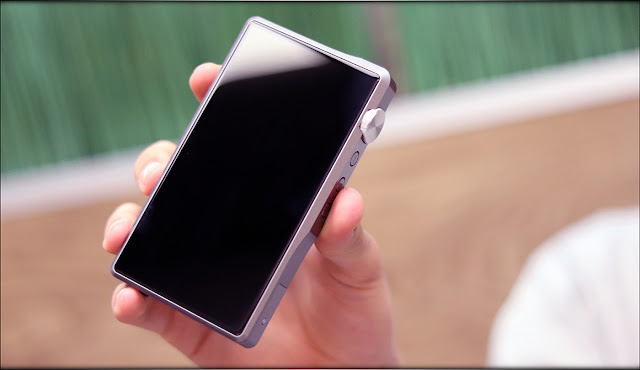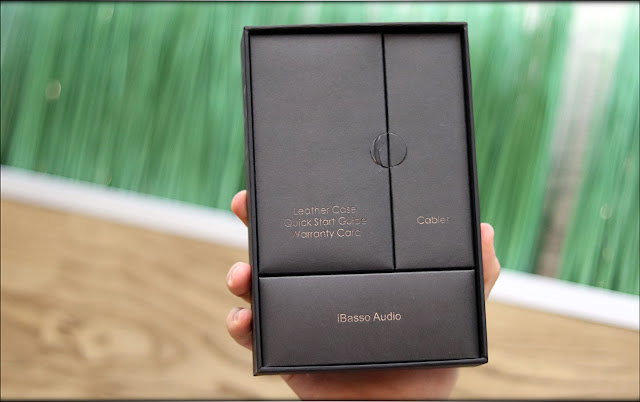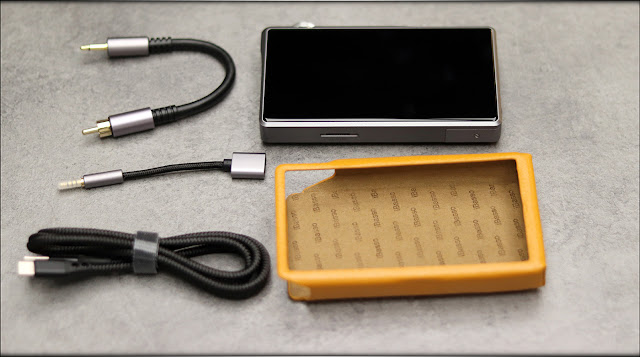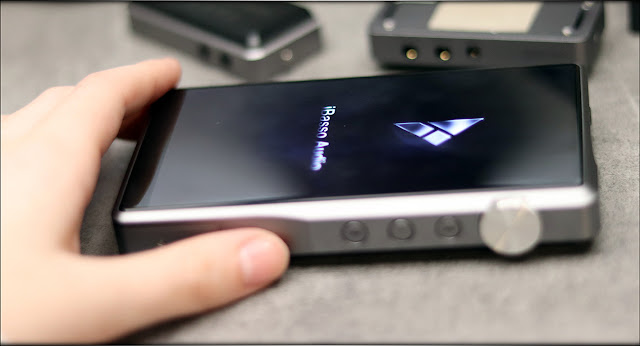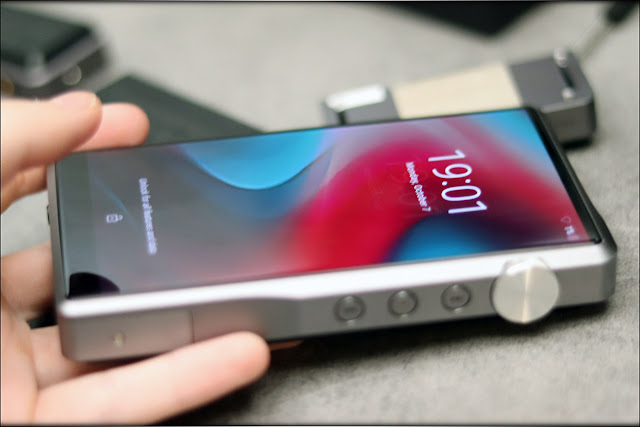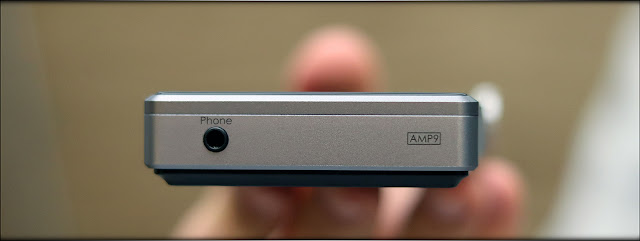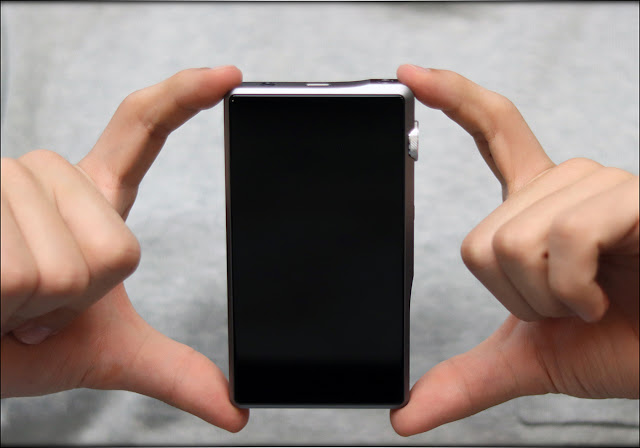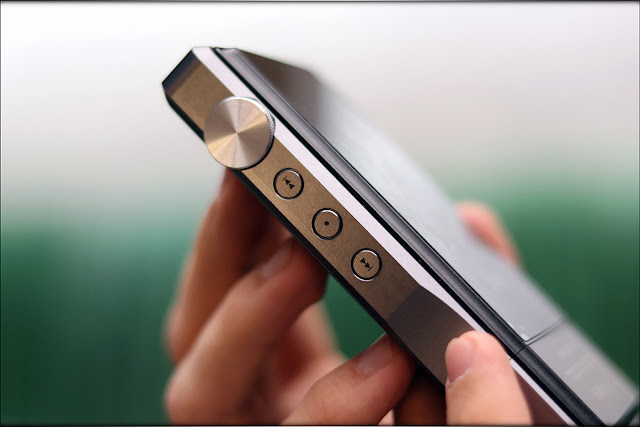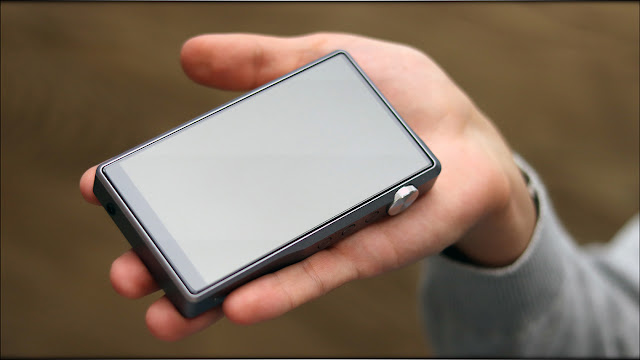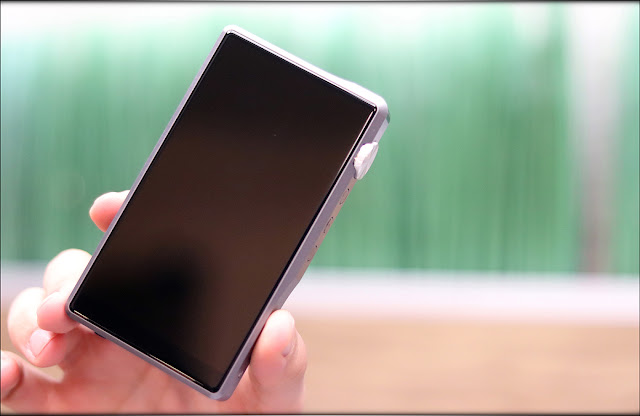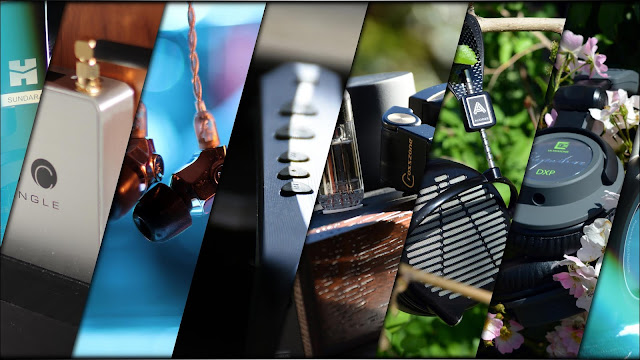~: I originally published this on THL. Now I wish to share it with my Head-Fi fellows :~
:: Disclaimer ::
iBasso provided the DX220 free of charge for the purpose of my honest review, for good or ill.
The DX220 sells for $899, AMP8 for $199, and AMP9 for $250.
www.iBasso.com
iBasso on Amazon
Features:
– Dual SABRE ES9028PRO DAC Chips.
– Bit for Bit Playback With Support up to 32bit/384kHz.
– Support of Native DSD up to 512x.
– 5.0″ IPS Full Screen (1080*1920), With On Cell Capacitive Touch Panel.
– Corning Glass on The Front Screen And Rear Panel.
– Support of QC3.0, PD2.0, & MTK PE Plus Quick Charge.
– XMOS USB Receiver With Thesycon USB Audio Driver, Ma king This an Easy to Use USB DAC.
– A Total of 5pcs of Femtosecond League Oscillators, With 2 of Them Being Accusilicon Ultra Low Phase Noise Femt osecond Oscillators.
– 8-core CPU.
– Mini Optical Output And Mini Coaxial Output.
– 4GB LPDDR3 – 64G of Internal Memory.
– 5G WiFi And Bluetooth 5.0.
– Support SDXC And SDHC Micro SD Cards.
– Three Settings of Gain Control.
– Patented User Exchangeable AMP Cards.
– 150-Step Digital Volume Control.
– Audio Formats Supported: MQA, APE, FLAC,WAV, WMA, AAC, ALAC, AIFF, OGG, MP3, DFF, DSF and DXD.
– Support for M3U Playlists.
– 4400mAh 3.8V Li-Polymer Battery (Playtime Will Vary With AMP Cards Used)
Specs:
2.5mm Headphone Out :
Output Level : 6.2Vrms
Frequency Response : 10Hz~45kHz +/-0.3dB
S/N : 125dB
THD+N : 0.00018% (no Load, 3Vrms),
0.0002% (32Ω Load, 3Vrms)
Crosstalk : -119dB
3.5mm Headphone Out :
Output Level : 3.1Vrms
Frequency Response : 10Hz~45kHz +/-0.3dB
S/N : 123dB
THD+N : 0.00031% (no Load, 1.8Vrms),
0.00035% (32Ω Load, 1.8Vrms)
Crosstalk : -117dB
Line Out :
Output Level : 3.0Vrms
Frequency Response : 10Hz~45kHz +/- 0.3dB
S/N : 122dB
THD+N : 0.00035% (no Load, 1.8Vrms)
Crosstalk : -116dB
Average Play Time: 8 hours. (The play time varies with different resolutions
and headphone/IEM loads.)
I wasn’t expecting a new flagship DAP from iBasso anytime soon. I wasn’t ready. The DX200 was still my principle player, and I was nowhere near bored with it.
Then I remembered: I got my hands on the DX200 late in the game. It was already an established product with matured firmware when Paul sent me a unit. Grudgingly, I had to accept that maybe it
was about due an update.
And “update” is the right word. The fundamental design is much the same, but everything is better, more attractive, of higher quality, and superior tech. The aesthetics are sleeker and less tank-like. The buttons and volume wheel are more elegant. The display is a gorgeous 5” 1080p full screen, and among the nicest I’ve seen in the DAP market. It comes across as flawless. Unlike the screen on the DX200, which looked even lower res than it actually was, with aggressive pixilation and jagged lines. Of course, I never cared a great deal about such things, but I won’t deny, it’s a nice bonus.
The leather case is a bit of a disaster. I had to make liberal cuts to the bottom opening to be able to use wide barrel balanced cables of the sort plusSound employs. Otherwise you can’t get them to plug in all the way. Also, getting the case off is more than a little difficult. While it’s good to know the DAP won’t fall out by accident, one doesn’t enjoy the sense of dread every time they wish to slip the player out. All of my usual tricks for doing so don’t seem to work here, and I always resort to brute tactics, which have caused further damage to the leather.
The DX220 is fully loaded, much like its predecessor, with streaming capabilities, Bluetooth, and all that crap I have no interest in. Only it takes this even further. Not only can you connect to a BT headphone, but you can also control the DAP from your smartphone. This is a feature I’ve seen show up in a lot of recent audiophile devices. It may not be for this old dinosaur, but you may consider it a must-have. So rest assured, iBasso has you covered.
I did, however, spend some time with simple Bluetooth. The Bang&Olufsen Beoplay H9 achieved a stable connection to the DX220, and, apart from a hiccup at the beginning, played flawlessly for about an hour. These headphones have really grown on me, of late. I’ve yet to hear a better sounding pair of wireless cans.

The DX220 is a warm, full-bodied device. Whether we’re talking AMP1mk2, AMP8 high-current module, or even the vacuum tube AMP9, the DX220 is decidedly warm and organic of tone. That’s not to say the AMPs don’t have an effect on the sound, because they most certainly do. And I shall endeavor to articulate their influence over the experience. But I was pleasantly surprised to note the distinct voice of the DX220 shine through, no matter what module you connected it to. Unlike the DX200, there is no inherently cold tilt to compensate for.
iBasso took their new DAP in the direction of the DX150: Bold, musical, and strong. It issues authoritative sonics, with smooth, naturalistic color. This is an easy, pleasing listen that will not soon fatigue. Joyful depth and seductive richness, accompanied by a grand soundstage, makes even the most boring headphones seem brimming with potential. For those monitors capable of portraying it, the DX220 renders exquisite dimensionality, giving shape and structure to the notes, as if you can almost see the artist or instrument releasing them.

As you’d expect from a Pro-grade SABRE chip, the DX220 is one bad mother ******* when it comes to detail retrieval and resolution. The smallest trickle of water at the church window or the subtlest flutter of wings on the 17th ward, and you hear it as if you are there, ears perked. This is top tier quality, make no mistake. And all without that SABRE glare of poorer implementations. iBasso has mastered this stallion, and what you get is a profoundly honest, grounded presentation. The most natural of naturals.
AMP1 mk2 is the perfect starting model. It was enough to impress me right out of the box. It’s nimble and detailed, warm, but artfully reserved. There’s power and authority, with a subtle elegance to beguile the listener. To put it simply, it’s beautiful.
AMP8 is 4.4mm Balanced, and my favorite with the DX200. The high current module added such dynamism and robustness. And indeed, it does this for the DX220, as well. Though it’s not as needed as it was with the last gen player. Still, if you want a bigger soundstage, the strongest punch, and enough power to drive Planar Magnetic headphones to satisfactory levels, then this is indeed the right AMP for you. Everything just seems bigger and more vibrant. But you will lose out on some battery life.

AMP9, which is 3.5mm single-ended, has become my favorite for the DX220. While it’s supposedly high current, it lacks the driving force of AMP8, so it’s not well-suited for seriously demanding headphones, like Sundara, or the LCD-3. But it does manage the 300Ω Atticus splendidly, a setup with which I’ve enjoyed countless hours. AMP9’s claim to fame is the Korg Nutube vacuum tubes. They achieve exactly what you’d wish of them: The Tube Sound. Extra warmth, glorious harmonic overtones, and new plateaus of richness. Even the soundstage seems bigger. I’m tempted to say it exceeds that of AMP8, though without two DX220s to quickly switch between, it’s hard to be sure. While I’d like to have the driving power of a high-current module, AMP9 creates something so utterly magical I cannot bring myself to use anything else.
Making the comparison to the DX200 ($899,
Review HERE), you see the older model has a thinner, airier sound. It comes off cleaner, due to brighter tuning. One of the major criticisms of the DX200 with the original AMP1, was how cold and lifeless it could seem. Luckily, subsequent amp modules resolved much of this. The DX200>AMP8 has been my reference player for a long time now, and it never fails to impress. Still, the new DX220 is unquestionably warmer, with greater note weight and a rounder, fuller presentation. There’s a maturity and refinement which is most welcome. Without having two identical AMP modules, I can’t rightly say which has the wider soundstage. They are both quite large, and will not disappoint in that regard.
Cayin’s recently released N6ii ($1,199) is a strong competitor. Not only is the amp circuitry replaceable, but so is the whole DAC portion. But this comparison is with the stock AK4497EQ module. And let me tell you, it’s more than enough! There is a tremendous amount of power here, and I drive the HIFIMAN Sundara with ease. It’s clean power, too. The sound is more vibrant and dynamic than the DX220, with cleaner, blacker background, greater bass presence, and sharper resolution. All this, and the soundstage is a touch wider, too. Now, this comparison is with the AMP9 Nutubes installed. Against the AMP8 high-current module, the gap is less impressive, with the DX220 gaining a bit of vibrancy and sharpness. But I’d still give Cayin the win here, if only by a little. I like both DAPs set with Slow Roll-Off digital filters, for the most natural sonics. Yet to my ears, the N6ii takes the lead in transparency. But of course, it’s more expensive.
With various AMP modules comes various strengths and uses. Because of the succulent warmth of AMP9, brighter monitors will sound their best. AMP8’s savage output power drives full-size headphones to damn-near their potential. I won’t talk much about AMP1mk2 because it’s the vanilla option, and easily summarized by saying, “It’s adequate for most scenarios.” As good as it sounds, and it does sound very good, most folk will be drawn to the superior audio of AMP7, 8, or 9. AMP7 being the single-ended version of the high-current AMP8, which is balanced.

Let’s start off with an iBasso IEM, the InTune IT04 ($499,
Review HERE). This thing is relatively affordable, in the world of audiophilia, tuned for clarity and detail, air and soundstage. It leans a little to the thin and bright. So it ought to come as no surprise that AMP9 is the best pairing. Even though there is a little background hiss, the Korg tubes fill her out, introducing a hint of lushness and low-end dynamics. The IT04’s bass driver is capable of so much when properly encouraged. AMP9 even warms up the treble, which is usually a tad cold on the IT04. This pairing is the perfect example of the beauty in marrying two complementary voices. They are stronger together, and you are the one who profits from it.
iBasso also has an excellent set of semi-open cans, the SR1 ($499,
Review HERE). Thanks to their super efficient design, they do not need AMP8’s power, so you can bask in the vacuum tubes of AMP9. The SR1 is one of the best-balanced monitors I’ve ever heard. It does everything with just the right measure. There’s clarity, and profound detail. Yet it never strays into brightness or stridency. The bass is full and delicious, warming up the mids to create a very natural, full tone. Due to the masterful balance it walks, the SR1 plays well with every source. Bright, warm, or neutral. Connecting it to AMP9, you are treated to the very essence of lush musicality. And without any sense of veil or claustrophobia.


I spent most of my listening time with the Empire Ears Legend X ($2,299,
Review HERE). LX has enough treble clarity, enough low-end weight, enough mid-range vibrancy… it has enough of everything. More than enough. There’s not a source that makes these sound bad, so choose whichever AMP module you like. LX will shine like the sun. The virtues of this monitor are of such a high degree, their technical prowess so great, I consider them the ultimate IEM to unlock the full potential of any DAP. And indeed, they showcase the DX220 like nothing else can.

For those on a modest budget looking for portable, closed-back over-ear cans, I always recommend the Meze 99 Classic ($309,
Review HERE). You just can’t beat them in this price-range. They have a sound very few people won’t find enticing. Tons of detail and air, crystalline clarity, and a glorious bass presence that bleeds into the mids just enough to give them warmth and character. They are ever so slightly on the thin side, with treble that can be a little bright. So AMP9 really warms these up nicely, elevating Meze to new heights of greatness.
If you have no budget whatsoever and don’t mind an incredibly bulky set of closed-backs, my personal favorite are the ZMF Headphones Atticus ($1,199,
Review HERE). These are the cans I take to work with me every day. While Atticus is 300Ω, most DAPs seem to drive them well. I especially like these with AMP9, as the Nutubes really bring out Atticus’ musicality, making them sound like an acoustically warm concert hall. There’s just enough head-room on the volume that you should be safe with even the most quiet albums. But of course there’s always AMP8, which eliminates any such concerns. And god knows I have no complaints with that pairing.

Now, the Audeze LCD-3F ($1,999) absolutely requires AMP8. Being of Planar Magnetic design, they are hungry *******! I tried them with AMP9, but I was maxing out the volume on a medium-loud album. You will run into trouble there. But AMP8 did great. The smooth, laidback sonics of the LCD-3, with their inherent warmth, mingled in such a lovely way the DX220’s own rich timbre. It’s a heavenly experience, and I love taking this setup to the back porch when I smoke a cigar.

iBasso forged a wonderful upgrade to the legendary DX200. The new DX220 is indeed a worthy predecessor, exhibiting improvements in every aspect of its design and auditory signature. iBasso shows us a mature, more refined philosophy. The sound is richer and more musical. The UI is leaps and bounds ahead of the previous generation, standing alongside industry leaders. And the chassis is sleek, elegant, and beautiful. The DX220 is more than an upgrade, it’s a statement, and a promise for the future. And I’m excited for it.
-~::
Pinky_Powers::~-













